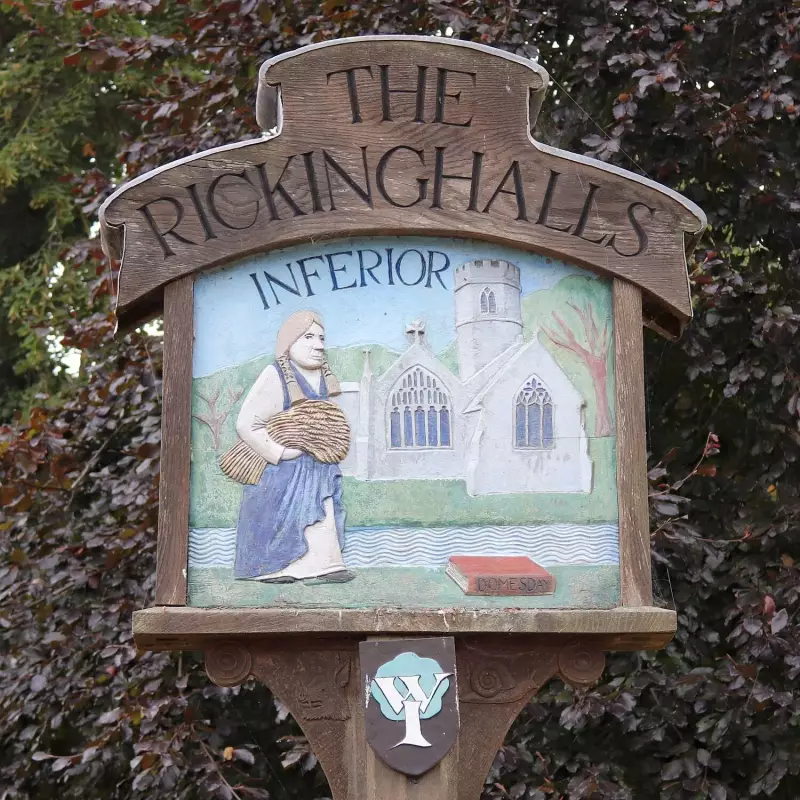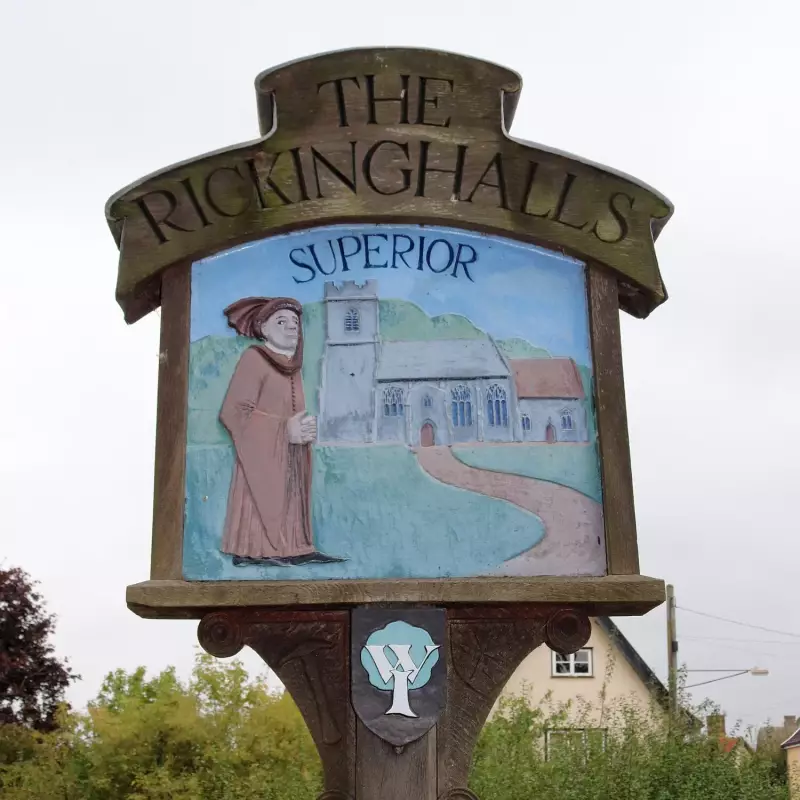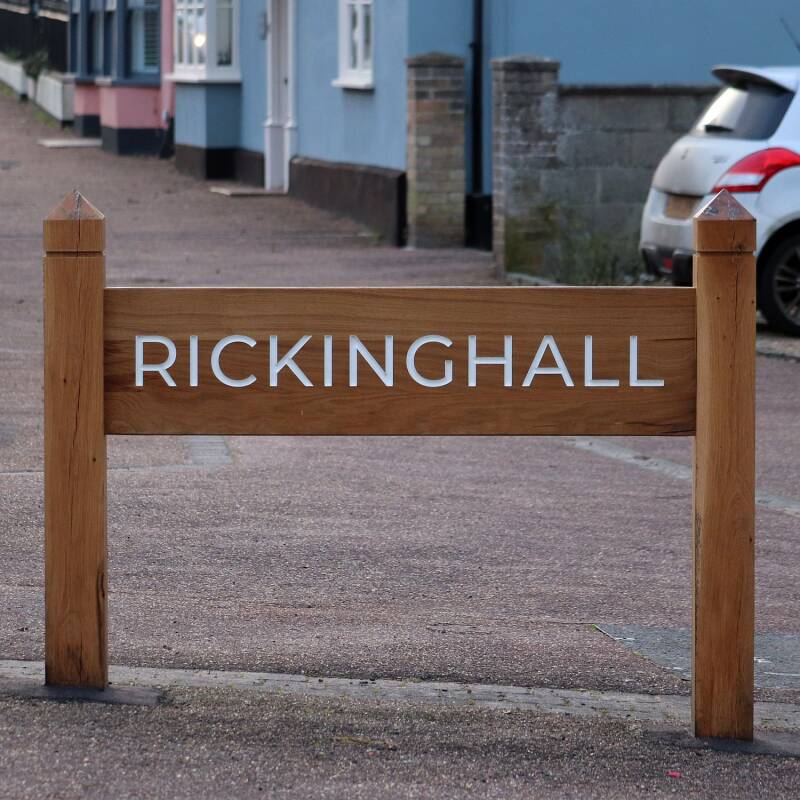The Rickinghalls
The Sign
The sign is located in the corner of St Mary's churchyard (Rickinghall Inferior church). The original sign was erected in 1985, but replaced in 2001 with a similar design. Both sides show the churches of the respective villages, with the Women's Institute logo below.
Rickinghall Inferior shows the Round Tower church of St Mary with Britvolda in the foreground and the Domesday Book on the grass. Carvings of a boars head (crest of the Bacon Family) and an edible snail can be found in the spandrels.
Rickinghall Superior shows the now redundant church of St Mary, which is now separated by the by-pass. In the foreground is John de Rickinghall who was part of the Knight's Templar. Carvings of an axe possibly related to flint knapping at Broomhills and a shield of the Knight's Templar are shown in the spandrels.
There is a boundary sign located where the village passes into Botesdale to the east.
The Name and Population
Rickinghall means "The nook of land or hollow of Rica's people", from Old English and Anglian. The suffixes probably relate to Superior being on higher ground and Inferior being in the valley. The population of Superior was 719 at the 2021 census and Inferior was 420. It was called Rikinghale in 1000 and Richingehalla, Rikingahala in the Domesday Book.
Other Points of Interest
Rickinghall was the birthplace of Sir Mackenzie Bowell, Prime Minister of Canada from 1894 to 1896, as well as the life-long home of Basil Brown, the amateur archaeologist who was instrumental in discovering and excavating the Sutton Hoo Anglo Saxon Ship Burial and associated treasure in 1939.
The Original Sign



